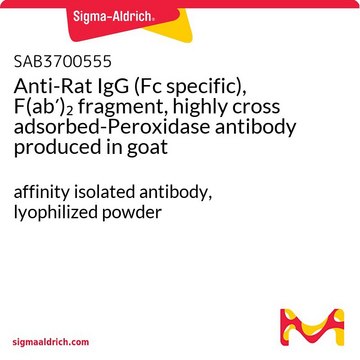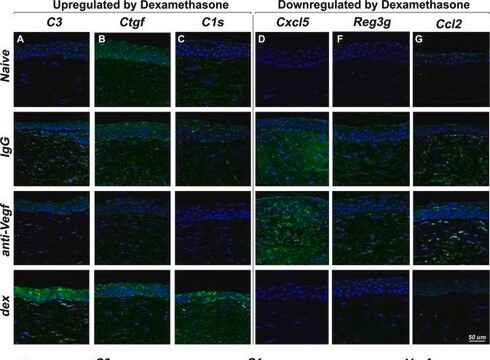詳細
Monoclonal Anti-PSPC1 (mouse IgG1 isotype) is derived from the hybridoma 1L4 produced by the fusion of mouse myeloma cells and splenocytes from BALB/c mice immunized with a synthetic peptide corresponding to a sequence at the C-terminal region of mouse PSPC1. DBHS (Drosophila behavior, human splicing) protein family, consisting also of NONO (nonPOU-domain-containing, octamer binding protein) and SFPQ (splicing factor, praline- and glutamine-rich). NONO, paraspeckle component 1 (PSPC1) and SFPQ are the core protein components of paraspeckles. These multi-functional nuclear proteins, under normal conditions, cycle between the nucleoplasm, paraspeckles and the nucleolus.
Paraspeckle component 1 (PSPC1) is encoded by the gene mapped to human chromosome 13q12.11. The encoded protein is a member of DBHS (Drosophila Behavior Human Splicing) family of proteins.
免疫原
Synthetic peptide corresponding to a sequence at the C-terminal region of mouse PSPC1, conjugated to KLH. 1 The corresponding sequence is identical in rat and human PSPC1.
アプリケーション
Monoclonal Anti-PSPC1 antibody produced in mouse has been used in immunohistochemistry, immunoblotting and immunofluorescence.
生物化学的/生理学的作用
Drosophila behavior, human splicing (DBHS) proteins bind both double- and single-stranded DNA and RNA, and are involved in various aspects of RNA and DNA metabolism, such as transcription, pre-mRNA 3′ processing, transcription termination and mRNA splicing. DBHS proteins regulate circadian rhythm and carcinogenesis. PSPC1 activates androgen receptor mediated transcription. PSPC1 forms a heterodimer with NONO that localizes to paraspeckles in a RNA polymerase II-dependent manner.
Since paraspeckle component 1 (PSPC1) has lower background nucleoplasmic signal in various cell types compared to other members of DBHS (Drosophila Behavior Human Splicing) family of proteins, it is frequently used as a marker for paraspeckles. The encoded protein plays a vital role in regulation of transcription. Deletion of the gene is associated with the hindered psychomotor development, muscle hypotonia, unilateral microphthalmia with ptosis, congenital eye malformation and facial dysmorphic features.
物理的形状
Solution in 0.01 M phosphate buffered saline, pH 7.4, containing 15 mM sodium azide.
免責事項
Unless otherwise stated in our catalog or other company documentation accompanying the product(s), our products are intended for research use only and are not to be used for any other purpose, which includes but is not limited to, unauthorized commercial uses, in vitro diagnostic uses, ex vivo or in vivo therapeutic uses or any type of consumption or application to humans or animals.










